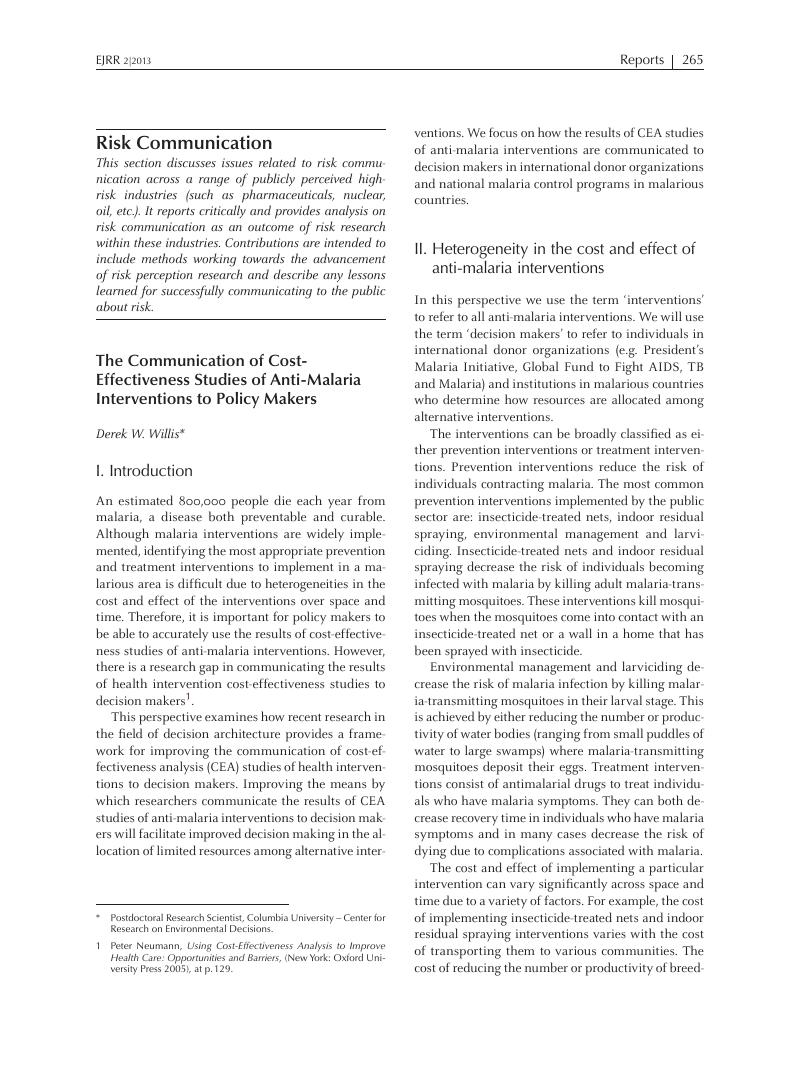No CrossRef data available.
Article contents
The Communication of Cost-Effectiveness Studies of Anti-Malaria Interventions to Policy Makers
Published online by Cambridge University Press: 20 January 2017
Abstract

- Type
- Reports
- Information
- Copyright
- Copyright © Cambridge University Press 2013
References
1 Neumann, Peter, Using Cost-Effectiveness Analysis to ImproveHealth Care: Opportunities and Barriers, (New York: Oxford University Press 2005), at p. 129.Google Scholar
2 Breman, Joel, et al “Conquering Malaria”, in Disease Control PrioritiesDeveloping Countries, 2nd ed. (New York: Oxford University Press, 2006).Google ScholarPubMed
3 Thaler, Richard and Sunstein, Cass, Nudge: Improving DecisionsAbout Health, Wealth, and Happiness, (New York: Penguin Books, 2009).Google Scholar
4 Johnson, Eric J., et al “Beyond Nudges: Tools of a Choice Architecture”, Marketing Letters (2012).CrossRefGoogle Scholar
5 Weber, Martin et al, “The Effects of Splitting Attributes on Weights in Multiattribute Utility Measurement”, Management (1988).Google Scholar
6 Johnson, Eric J., et al “Beyond Nudges: Tools of a Choice Architecture”, Marketing Letters (2012).CrossRefGoogle Scholar
7 Hammer, Jeffrey, “The Economics of Malaria Control”, The WorldBank Research Observer (1993).CrossRefGoogle Scholar


